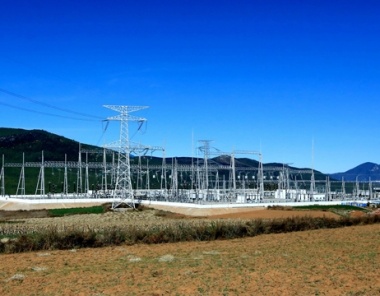Railroad facilities
2025-07-11
Implementing anti-drone systems for the security of railroad facilities is an increasingly important consideration given the potential threats posed by unauthorized drones. Here are several key components and strategies that can be employed to enhance the security of railroad facilities against drone incursions:
1.Detection Systems
Radar Systems: Employ radar technology specifically designed to detect small aerial vehicles, including drones. These systems can provide real-time tracking of drone movements.
RF Signal Detection: Utilize radio frequency (RF) detectors to identify the signals emitted by drones and their controllers. This can help in locating the source of the drone.
Optical Sensors: Install high-resolution cameras with video analytics capabilities to visually monitor the airspace and identify unauthorized drones.
Acoustic Sensors: Use sound detection technology to pick up the distinctive noise made by drones, which can help in early detection.
2.Response Mechanisms
Jamming Technology: Deploy RF jammers to disrupt the communication signals between the drone and its operator. This can cause the drone to return to its home point or land safely.
Net Guns: Use net-launching systems that can physically capture and disable drones. This approach is non-destructive and minimizes collateral damage.
Interceptors: Employ drones or other aerial vehicles designed to intercept and neutralize rogue drones, either by capturing them or forcing them to land.
3.Integrated Security Systems
Command and Control Centers: Establish a centralized command center that integrates data from various detection systems for real-time monitoring and response coordination.
Alarm Systems: Implement alarm systems that trigger alerts when a drone is detected, allowing security personnel to respond promptly.
Access Control: Combine drone detection with existing security measures, such as access control systems for personnel and vehicles, to enhance overall facility security.
4.Regulatory Compliance and Legal Considerations
Local Regulations: Ensure compliance with local and national regulations regarding the use of anti-drone technologies, particularly concerning RF jamming and interception methods.
Engagement with Authorities: Collaborate with law enforcement and aviation authorities to establish protocols for responding to drone threats.
5.Training and Awareness
Staff Training: Train security personnel to recognize drone threats and understand the operational capabilities of the anti-drone systems in place.
Public Awareness Campaigns: Inform the public about the potential risks of unauthorized drone use near railroad facilities and encourage reporting of suspicious activities.
6.Partnerships and Collaboration
Collaboration with Drone Manufacturers: Work with drone manufacturers to understand their technology and develop countermeasures.
Research and Development: Invest in R&D to stay ahead of evolving drone technologies and develop more effective counter-drone measures.
7.Regular Assessments and Updates
Threat Assessments: Conduct regular assessments of potential drone threats specific to railroad operations and facilities.
System Upgrades: Keep detection and response systems updated with the latest technology to ensure effectiveness against new drone models and tactics.
By implementing a comprehensive anti-drone strategy, railroad facilities can significantly enhance their security posture and mitigate potential risks associated with unauthorized drone activity.
← Prev Post
Next Post →
Related Info










